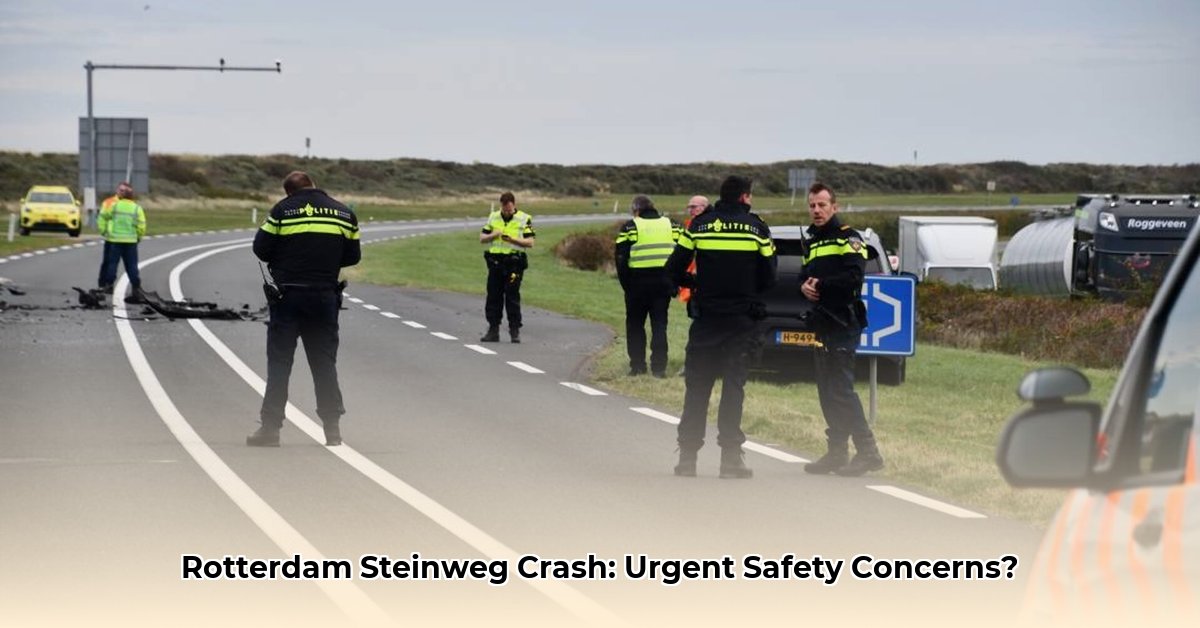
Two Fatal Accidents Highlight Critical Safety Gaps in Rotterdam Harbour
Two recent, tragic accidents at Rotterdam's Steinweg Quay, involving the handling of massive steel plates, have resulted in fatalities and serious injuries, exposing significant safety deficiencies within the harbour's operations. These incidents demand immediate and comprehensive action to prevent future tragedies and underscore a crucial need for improved safety measures in handling heavy materials. The scale of the loss and the potential for further incidents necessitate a thorough investigation and a concerted effort from all stakeholders to implement substantial changes.
Rotterdam Harbour: A Global Trade Hub Facing a Safety Crisis
Rotterdam's harbour is a vital global trade artery, renowned for its high volume of cargo handling. This intense activity necessitates robust safety protocols to mitigate inherent risks associated with the movement of heavy materials. The recent Ongeval Steinweg incidents serve as a devastating reminder of the potential catastrophic consequences when safety measures are lacking or fail. The sheer scale of operations increases the importance of effective safety management systems.
Incident Details: Unveiling the Circumstances
While the full details of the two separate incidents remain under investigation, preliminary reports indicate a common thread: the handling of large steel plates. The exact sequence of events in each accident is still unclear, but the loss of life underscores the urgent need for a comprehensive review of safety procedures and equipment. What is known is that lives were lost and several workers suffered severe injuries. What remains unknown are the precise causes that contributed to these devastating events, which is why a thorough investigation is vital.
Analysis: Uncovering Potential Causes
Several potential contributing factors are currently being explored by investigators. These include:
- Human error: Inadequate training, improper lifting techniques, or a lack of adherence to safety procedures may have played a significant role.
- Equipment failure: Malfunctioning cranes, lifting magnets, or other equipment could have contributed to the accidents. Regular maintenance and inspection protocols are under scrutiny.
- Procedural issues: Ambiguous or insufficient safety protocols could have created hazardous working conditions.
- Environmental factors: Adverse weather conditions, such as strong winds or heavy rain, may have increased the risk during operations.
The ongoing investigation will aim to determine the precise weight of each factor in causing these accidents. The findings will be crucial for implementing effective preventative measures.
Stakeholder Responses: A Call for Collaborative Action
The Port Authority of Rotterdam, various shipping companies operating within the harbour, and the Dutch government are all actively responding to these events. Official statements express deep concern and a commitment to thoroughly investigate the incidents. The focus is on collaboration rather than assigning blame, to ensure a comprehensive and effective course of action is implemented. The unified response signifies a shared understanding of the gravity of the situation.
Safety Recommendations: A Multi-pronged Approach
Implementing effective solutions requires a multi-pronged strategy addressing both short-term and long-term needs. This must involve immediate improvements to current safety practices as well as a complete restructuring of safety procedures based on comprehensive investigations. A proactive approach to minimizing risk is needed.
Key Recommendations:
- Mandatory refresher training: All personnel should undergo comprehensive refresher training on safe handling procedures for heavy materials, emphasizing best practices and risk mitigation techniques.
- Equipment upgrades: A detailed assessment of all equipment is necessary, followed by upgrades and replacements where needed, to ensure functionality and safety.
- Improved safety protocols: A complete review of existing safety protocols is essential, culminating in clearly defined, easily understood guidelines for handling heavy steel plates, applicable across various conditions.
- Enhanced inspections: Stricter and more frequent inspections of equipment, work areas, and procedures are vital to identifying and addressing potential hazards before accidents occur.
- Investment in technology: Exploring advanced technologies, such as automated systems and sensor-based monitoring, can improve safety and efficiency.
These measures, alongside others identified in the ongoing investigation, will play a key role in preventing future tragedies. The need for substantial investment in safety is undeniable.
Regulatory Implications: Strengthening the Framework
The Ongeval Steinweg incidents will undoubtedly lead to changes in safety regulations in Rotterdam and potentially across the Netherlands. This includes a review of existing laws, training standards and enforcement mechanisms. These changes may include stricter licensing requirements for workers, enhanced training programs, updated safety standards compliant with international best practices, and increased frequency of inspections. The goal is to create a more secure and robust system to prevent similar incidents from occurring.
Conclusion: A Call for Proactive Safety Measures
The tragic loss of life in the Ongeval Steinweg incidents serves as a stark reminder of the crucial need for robust and proactive safety measures in the handling of heavy materials within Rotterdam harbour. The ongoing investigation is vital for understanding the precise causes of these accidents, enabling the development of targeted and effective solutions. The collaborative efforts of all stakeholders – from the Port Authority to shipping companies and government agencies – are key to creating a safer working environment for all. The future hinges on learning from these tragedies to create a robust safety culture.